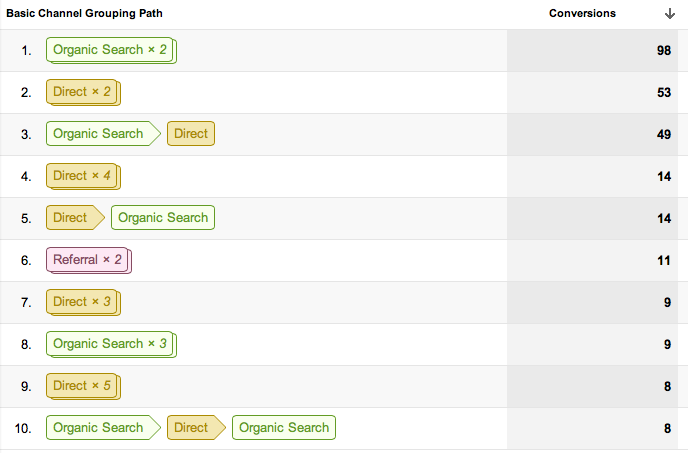Revealing the Blind Spots: Understanding What Google Analytics Goals Can not Measure
In the realm of digital analytics, Google Analytics stands as a powerful device for monitoring and examining on the internet user interactions. Recognizing what Google Analytics goals can not measure is critical for obtaining an extensive view of customer habits and engagement.
Customer Behavior on External Operatings Systems
Understanding how customers engage on outside systems is essential for optimizing online approaches. Outside systems, such as social media networks, reference web sites, and online discussion forums, play a significant duty in driving website traffic to a firm's internet site. By evaluating individual habits on these systems, companies can get beneficial understandings into the efficiency of their advertising initiatives and the choices of their target audience.
One trick aspect of user behavior on outside systems is the referral resource. By tracking where the customers are coming from, companies can recognize which platforms are driving the most traffic to their site. This details can aid companies allocate their resources much more effectively, focusing on the platforms that produce the finest results.

Offline Communications and conversions
Examining user actions on exterior systems gives valuable understandings into online approaches; however, taking into consideration offline conversions and interactions is equally essential for a thorough understanding of a firm's overall performance. While Google Analytics excels at tracking on the internet interactions, it drops short in catching the full customer journey that frequently includes offline touchpoints. Offline conversions, such as in-store purchases or phone queries, play a considerable role in lots of services' success. Overlooking these interactions can cause a distorted view of the efficiency of advertising and marketing campaigns and general company efficiency.

Acknowledgment Beyond Last Click
When diving right into the world of electronic advertising and marketing analytics, it ends up being necessary to look past the solitary touchpoint of the last click for an extra comprehensive understanding of acknowledgment. While Google Analytics offers useful understandings right into user behavior, depending only on last-click acknowledgment can be restricting - what data is google analytics goals unable to track. Acknowledgment models that go past the last click offer a more nuanced sight of the client journey, taking right into account all the touchpoints that bring about a conversion
Attribution beyond the last click allows marketers to assign credit rating to different communications along the conversion course, offering a clearer image of the effectiveness of different advertising and marketing networks. By discovering multi-touch attribution designs such as direct, time decay, or position-based attribution, businesses can much better designate their advertising and marketing budget plans and optimize their approaches for maximum impact.
Comprehending the influence of each touchpoint in the conversion process is crucial for making notified choices and making the most of ROI. By accepting attribution past the last click, organizations can get deeper understandings into customer actions and tailor their marketing initiatives better.
Cross-Device and Cross-Browser Monitoring

Likewise, cross-browser monitoring matches cross-device tracking by capturing individual habits as they change in between various internet internet browsers. Recognizing exactly how individuals connect with web sites on different web browsers can aid marketing experts optimize their online experiences to ensure uniformity and functionality throughout various systems.
Qualitative Data and User Intent
Comprehending customer intent with qualitative information analysis is important for establishing targeted electronic marketing strategies that reverberate with the demands and choices of the target audience. Qualitative information supplies insights right into the 'why' behind customer activities, shedding light on motivations, feelings, and choices that measurable data alone can not catch. By evaluating individual responses, remarks, and interactions, marketing experts can reveal beneficial info about individual intent, permitting them to tailor their messaging, web content, and offerings to better align with what their audience is looking for.
Qualitative data also assists in comprehending the context in which users engage with a website or application. This contextual understanding enables marketers to create even more pertinent and customized experiences, ultimately driving higher interaction and conversion rates. By delving right into customer intent through qualitative information evaluation, services can acquire a much deeper understanding of their target audience, leading to extra effective advertising approaches that meet customers' requirements and expectations.
Conclusion
To conclude, Google Analytics goals have restrictions in determining user habits on outside platforms, offline conversions, acknowledgment beyond last click, cross-device and cross-browser tracking, and qualitative data associated to user intent. what data is google analytics goals unable to track. It is very important for companies to be mindful of these unseen areas in order to supplement their information evaluation with various other tools and methods to obtain a right here much more extensive understanding of their audience and improve their overall digital advertising techniques
By evaluating individual habits on these platforms, organizations can obtain valuable understandings into the effectiveness of their marketing initiatives and the preferences of their target audience.
Examining customer behavior on outside systems offers valuable understandings right into online methods; nonetheless, considering offline conversions and communications is Going Here equally crucial for an extensive understanding of a business's general efficiency.In electronic advertising analytics, moving beyond last-click attribution to discover cross-device and cross-browser monitoring is crucial for obtaining a holistic understanding of user interactions throughout various platforms and gadgets. By assessing user feedback, remarks, and interactions, marketing experts can uncover useful info regarding user intent, allowing them to tailor their messaging, content, and offerings to much better line up with what their target market is seeking.
By diving into user intent with qualitative information evaluation, companies can get a much deeper understanding of their target audience, leading to much more reliable advertising and marketing approaches that fulfill customers' demands and assumptions.
Comments on “Comprehensive Listing of What Data Is Google Analytics Goals Unable to Track”